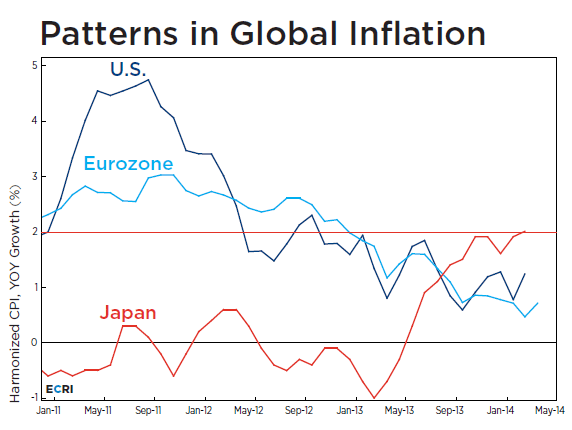Lakshman Achuthan is co-founder and managing director of the Economic Cycle Research Institute (ECRI), an independent organization focused on business cycle analysis and forecasting in the tradition established by ECRI’s co-founder, Geoffrey H. Moore. ECRI maintains business cycle chronologies for 20 countries around the world other than the U.S. Lakshman is the managing editor of ECRI’s forecasting publications and regularly participates in a wide range of public economic discussions.
He is a member of Time magazine’s board of economists, the New York City Economic Advisory Panel and serves as trustee on a number of non-profit boards. Lakshman is the co-author of Beating the Business Cycle: How to Predict and Profit from Turning Points in the Economy.
~~~
Earnings growth has risen for an unwelcome reason – because growth in hours has fallen faster than pay growth. As bad as that is for income growth, it’s also not a credible signal of an inflation upturn.
In the context of the ongoing taper, the Fed, like most other observers, remains optimistic about economic prospects. In turn, a number of economists have been focusing on “bullish” indicators of employment and inflation.
In particular, some of them think the rise in average hourly earnings (AHE) growth for nonsupervisory workers since 2012 implies less labor market slack. So, is the rise in AHE growth actually indicative of strengthening labor-market fundamentals, particularly inflationary pressures? We turn to our cyclical framework for answers.
For the private sector, year-over-year (yoy) growth in AHE has indeed risen noticeably since 2012. Since AHE is the ratio of total weekly pay to total weekly hours, it helps to look at the growth rates of each, shown in the lower panel of the first chart (purple and gold lines, respectively). From this perspective, the real story emerges. The yoy growth rates of both pay and hours have actually been declining since early 2012, but hours growth has fallen faster than pay growth. So, while rising AHE growth may seem like a good thing, in this case it’s actually driven by downturns in its components.
Increasing AHE growth may stem from underlying strengthening of hours and pay growth, or from a technicality, where both are actually falling. The latter is what we’ve been seeing in the current cycle, so the recent advance in AHE growth is no sign of strength. It doesn’t really point to a healing in the labor market, or necessarily imply a welcome rise in inflation, as some claim. Indeed, a broader measure of AHE growth – for supervisory and nonsupervisory workers – has actually been easing since last fall, and dropped to a 13-month low in April.
In any case, it’s risky to presume, based on AHE, that policy action has effectively achieved its goals of boosting inflation and healing the labor market. This is even more troubling in the context of the “yo-yo years” environment of weakening trend growth and more frequent recessions than most expect.
On a related note, we’ve seen much hand-wringing – and no little schadenfreude – about the Eurozone’s risk of “becoming Japan,” with yoy growth in its Harmonized CPI (HCPI) dipping in March to 0.5% before ticking up to 0.7% in April – still well below its 2% target. The U.S., of course, is generally considered to be in no such danger.
Yet, an apples-to-apples comparison – on the same HCPI metric – shows the U.S. (second chart, dark blue line) and the Eurozone (light blue line) to have been on virtually identical inflation tracks, with only a slightly smoother downward trajectory for Eurozone inflation. Indeed, U.S. inflation was lower than Eurozone inflation for 16 of the 19 months from April 2012 to October 2013, and virtually identical in February 2014, when HCPI growth was actually lower in the U.S. than in Germany or France.
Thus, contrary to popular belief, “lowflation” hasn’t been less of a reality in the U.S. than in the Eurozone. Additionally, the recent rise in Japanese HCPI growth to its highest reading since 2008 (red line) doesn’t necessarily signal a structural shift out of its third lost decade. And even if we see cyclical upturns in U.S. or Eurozone inflation in the months ahead, they wouldn’t imply monetary policy success, or the widely expected attainment of “escape velocity.”
So the U.S. isn’t all that different from other major developed economies, and ECRI’s analysis shows why the jubilation about rising wage growth in some quarters is premature, to say the least. Wishful thinking aside, we’re far from breaking out of a long-term pattern of falling trend growth, and the lingering lowflation that’s one of its symptoms, in the U.S. as in other major economies.




What's been said:
Discussions found on the web: